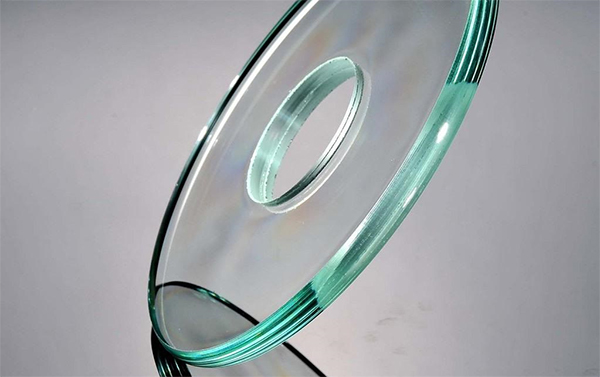The breakthrough in ultrafast laser technique enables high precision laser technique continues to develop and gradually immerses into glass processing sector.

Laser processing as a new manufacturing technique has immersed in different industries in the recent years. From the original marking, engraving to big metal cutting and welding and to later micro-cutting of high precision materials, its processing ability is quite versatile. As its applications continue to have more and more breakthrough, its ability to process many different kinds of materials has improved a lot. To put it simply, the potential of laser application is quite huge.
Traditional cutting on glass materials
And today, we are going to talk about laser application on glass materials. We believe that everyone comes across various glass products, including glass door, glass window, glassware, etc.. With glassware being so widely used, the processing demand of glass is huge. The common laser processing on glass is cutting and drilling. And since glass is quite brittle, special attention needs to be paid during the processing.
Traditional glass cutting requires manual cutting. The cutting knife often uses diamond as the knife edge. Users use that knife to scribe a line with the assistance of a rule and then use both hands to tear it apart. However, the cut edge would be quite rough and needs to be polished. This manual method is only suitable for cutting glass of 1-6mm thickness. If thicker glass is needed to be cut, kerosene needs to be added on the surface of the glass before cutting.

This seemingly outdated way is in fact the most common way of glass cutting in many places, especially glass processing service provider. However, when it comes to plain glass curve cutting and drilling in the middle, it quite hard to do that with that manual cutting. Plus, the cutting precision can not be guaranteed.
Waterjet cutting also has quite a lot of applications in glass. It uses water coming from high pressure water jet to achieve high precision cutting. Besides, waterjet is automatic and is able to drill a hole in the middle of the glass and achieve curve cutting. However, waterjet still needs simple polishing.
Laser cutting on glass materials
In the recent years, laser processing technique has experienced rapid development. The breakthrough in ultrafast laser technique enables high precision laser technique continues to develop and gradually immerses into glass processing sector. In principle, glass can better absorb infrared laser than metal. Besides, glass can not conduct heat very efficiently, so the laser power needed to cut the glass is much lower than that to cut the metal. The ultrafast laser used in cutting glass has changed from original nanosecond UV laser to picosecond UV laser and even femtosecond UV laser. The price of the ultrafast laser device has dropped dramatically, indicating bigger market potential.
Besides, the application is heading towards high-end trend, such as smart phone camera slide, touch screen, etc.. Leading smart phone manufacturers basically use laser cutting to cut those glass components. With the demand of smart phone increases, the demand of laser cutting would definitely increase.
Previously, laser cutting on glass can only maintain at 3mm thickness. However, the last two years witnessed a huge breakthrough. Right now, some manufacturers can achieve 6mm thickness laser glass cutting and some even reach 10mm! The laser cut glass has the advantages of no pollution, smooth cut edge, high efficiency, high precision, a level of automation and no post-polishing. In the coming future, laser cutting technique might even be used in automobile glass, navigator glass, construction glass, etc..
Laser cutting can not only cut glass but also weld glass. As we all know, combining glass is quite challenging. In the past two years, institutes in Germany and China successfully developed glass laser welding technique, which makes laser have more applications in the glass industry.
Laser chiller that is specifically used for glass cutting
Using ultrafast laser to cut glass materials, especially those used in electronics, requires the laser equipment to be highly precise and reliable. And that means an equally precise and reliable laser water chiller is a MUST.
S&A CWUP series laser water chillers are suitable for cooling ultrafast lasers, such as femtosecond laser, picosecond laser and UV laser. These recirculating water chillers can reach up to ±0.1℃ precision, which is leading in the domestic laser refrigeration industry.
CWUP series recirculating water chillers feature compact design and are able to communicate with computers. Since they were promoted in the market, they have been very popular among the users. Go explore these laser water chillers at https://www.teyuchiller.com/ultrafast-laser-uv-laser-chiller_c3





































































































